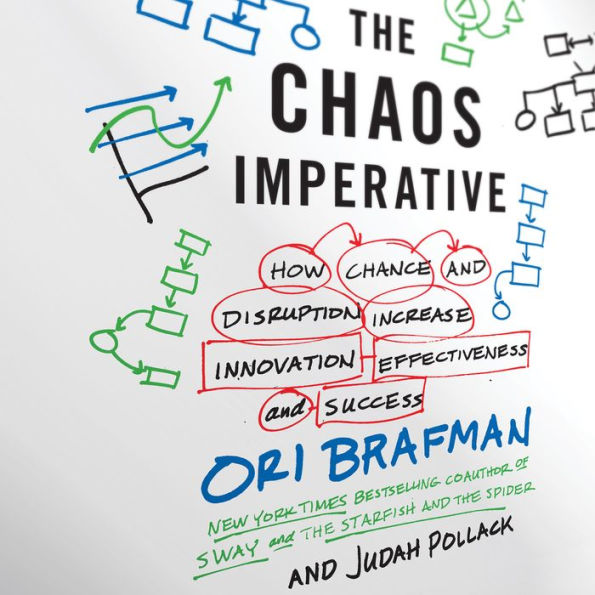Publishers Weekly
In this surprising tome, organizational expert Brafman (Sway), who has consulted with Fortune 500 companies and the U.S. Army, argues that contrary to conventional wisdom, chaos is essential for generating new ideas. While noting that organizational structure and discipline have their place, the best ideas, he posits, come from what he calls “white space”—short, unstructured moments that allow the brain to ruminate without performance pressure. Using examples such as Albert Einstein—who is said to have derived many of his best ideas in coffeehouses and on hikes—and the Army, arguably the least likely group to accept anything unstructured, the author offers five rules of chaos. The rules are based on a training program Brafman developed with the Army over the past two years: avoid the seductive lure of data, because not everything can be determined by metrics; put a loose structure around the chaotic; make white space productive; embrace “unusual suspects,” those outside the inner circle, who approach the issues from a fresh perspective; and organize serendipity (set the stage for spontaneous interactions of different groups). This useful and practical book will be welcomed by managers looking for new ways to innovate. Agent: Esther Newberg, ICM. (Aug.)
From the Publisher
This useful and practical book will be welcomed by managers looking for new ways to innovate.” -Publishers Weekly
Booklist
Thought-provoking insights. . . . A must read.”
—Booklist [HC starred review]
MAY 2014 - AudioFile
Narrator Drew Birdseye’s lively phrasing and appealing vocal personality help listeners stay engaged with this book, even when its abstractions are weighty or beg for more clarity. The authors use a potpourri of case examples to show how innovation requires “contained chaos,” and space for new people and ideas to appear. A running case narrative involves a U.S. Army officer who learns from one of the authors how to become more open to chaos and disruption. The main argument is that too much structure and hierarchy in large organizations suppresses the unfettered creativity that enterprises need to grow. More of a big-idea book than a how-to, it needs Drew Birdseye’s enthusiasm. His performance helps invite bureaucrats to be less afraid of uncertainty, disruptive people, and the free exchange of ideas. T.W. © AudioFile 2014, Portland, Maine
Kirkus Reviews
2013-09-01
Pop psych meets pop business in Brafman's (co-author: Click: The Forces Behind How We Fully Engage with People, Work, and Everything We Do, 2011, etc.) latest outing in the land of counterintuition, written with the assistance of leadership expert Pollack. Business types live and breathe for data, analysis and endless planning. Yet, as Joseph Schumpeter observed, there's something irresistibly compelling about cleaning house, resetting priorities and otherwise changing course by means of what he called "creative destruction." Brafman doesn't quite counsel burning down the house, but he isn't shy of introducing a little bubonic plague into the equation, either. Drawing on the results of a three-year consultancy with Martin Dempsey, now chairman of the Joint Chiefs of Staff, Brafman urges that we consider the bright side of chaos and calamity: The Black Death may have brought about all manner of death and destruction, but "it was actually instrumental in bringing about Europe's ascent to greatness." Post–James Gleick, the word "chaos" has been applied and misapplied in all sorts of half-baked, Gladwell-ian ways, and Brafman plays it a little loose at times. Nonetheless, this book has value in encouraging a rethinking of how things get done, particularly in heavily institutionalized cultures. For instance, in the military, there's a manual for everything, including one on the proper way to change a tire on a tuck. But why read a manual when a YouTube video would do? Such useful ideas come from what the author calls "casual downtime," the thinking time that institutions too often don't budget for. And what situation wouldn't benefit from more thinking about it, as long as it's not perfectly unbroken? For some readers, there won't be much news here, but for others--particularly those down the chain from Dempsey--there's much good food for thought in Brafman's sometimes-brash assertions.




